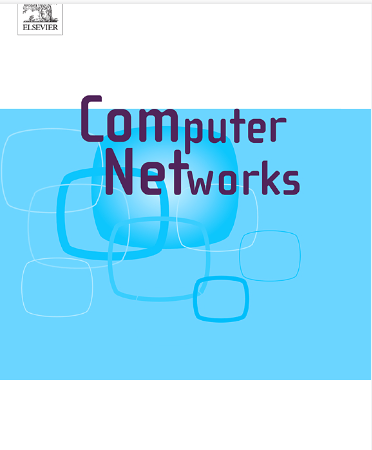击败CSI混淆机制:无线传感器网络中未经授权的Wi-Fi传感研究
IF 4.4
2区 计算机科学
Q1 COMPUTER SCIENCE, HARDWARE & ARCHITECTURE
引用次数: 0
摘要
由于可能存在未经授权的环境监测,Wi-Fi 传感技术的普及引起了人们对隐私的极大关注。作为一种典型的对策,信道状态信息(CSI)模糊器在发射器上使用时变滤波器来混淆 CSI,只有拥有预共享滤波器参数作为密钥的合法接收器才能还原原始 CSI。在这项工作中,我们提出了 SnoopFi,这是一个即使在训练样本有限的情况下也能在未经授权的情况下从被混淆的 CSI 中重建环境匹配传感信号的框架。当攻击者利用安全漏洞获取密钥时,SnoopFi 可获取准确的原始 CSI。当攻击者的能力有限时,它还能生成新的基础信号,以反映物理环境的传感。SnoopFi 采用两种策略来消除滤波器的影响:(1)攻击者首先尝试猜测密钥,然后通过模拟滤波器响应与密钥之间的非线性关系来反转滤波器;(2)在有多个接收天线的情况下,攻击者利用不同天线之间的 CSI 比值来消除滤波器的影响。一旦消除了混淆,SnoopFi 就会使用少量学习技术,在训练样本受限的情况下精确感知用户定位。实验结果表明,在两种策略下,SnoopFi 的定位精度分别达到 91.79% 和 92.05%,平均每类仅需 18 个样本。本文章由计算机程序翻译,如有差异,请以英文原文为准。
Defeating CSI obfuscation mechanisms: A study on unauthorized Wi-Fi Sensing in wireless sensor network
The proliferation of Wi-Fi sensing technology has raised significant privacy concerns due to potential unauthorized environmental monitoring. As a typical countermeasure, the Channel State Information (CSI) fuzzer uses a time-varying filter at the transmitter to obfuscate CSI, allowing only legitimate receiver who has the pre-shared filter parameters as keys to restore the original CSI. In this work, we present SnoopFi, a framework enabling unauthorized reconstruction of environment-matching sensing signals from obfuscated CSI, even with limited training samples. SnoopFi acquires accurate raw CSI when attackers exploit security vulnerabilities to obtain keys. It can also generate a new base signal that reflect the physical environment for sensing when the attackers’ capabilities are limited. SnoopFi employs two strategies to negate the filter’s effects: (1) The attacker first attempts to guess the keys, and then it inverts the filter by modeling the nonlinear relationship between the filter’s response and the keys; (2) With multiple receiving antennas, the attacker utilizes the ratio of CSIs between different antennas to wipe off the filter effect. Once the obfuscation is removed, SnoopFi uses a few-shot learning technique for precise sensing of user localization with constrained training samples. The experimental results show that SnoopFi achieves localization accuracies of 91.79% and 92.05% under the two strategies, respectively, with an average of only 18 samples per class.
求助全文
通过发布文献求助,成功后即可免费获取论文全文。
去求助
来源期刊

Computer Networks
工程技术-电信学
CiteScore
10.80
自引率
3.60%
发文量
434
审稿时长
8.6 months
期刊介绍:
Computer Networks is an international, archival journal providing a publication vehicle for complete coverage of all topics of interest to those involved in the computer communications networking area. The audience includes researchers, managers and operators of networks as well as designers and implementors. The Editorial Board will consider any material for publication that is of interest to those groups.
 求助内容:
求助内容: 应助结果提醒方式:
应助结果提醒方式:


